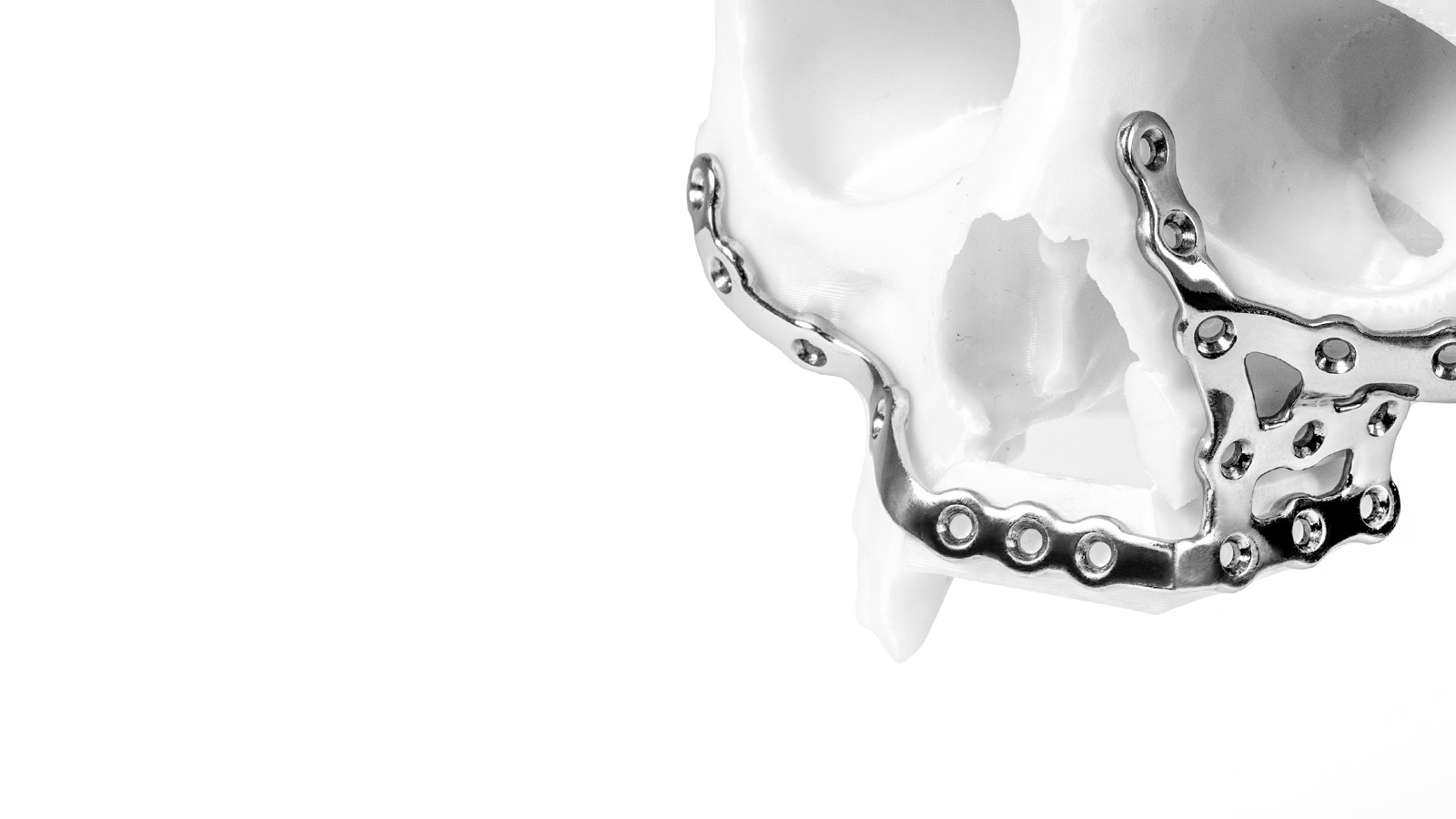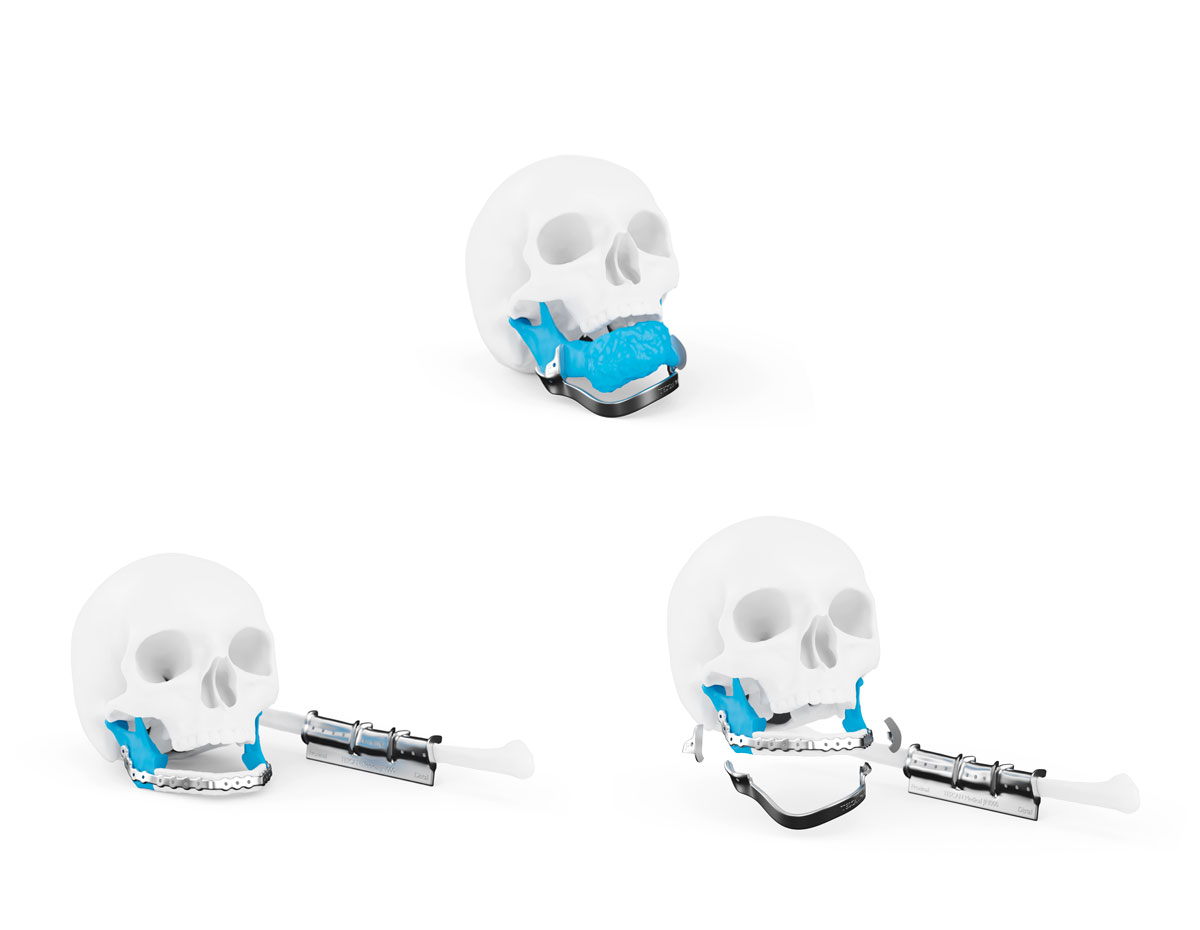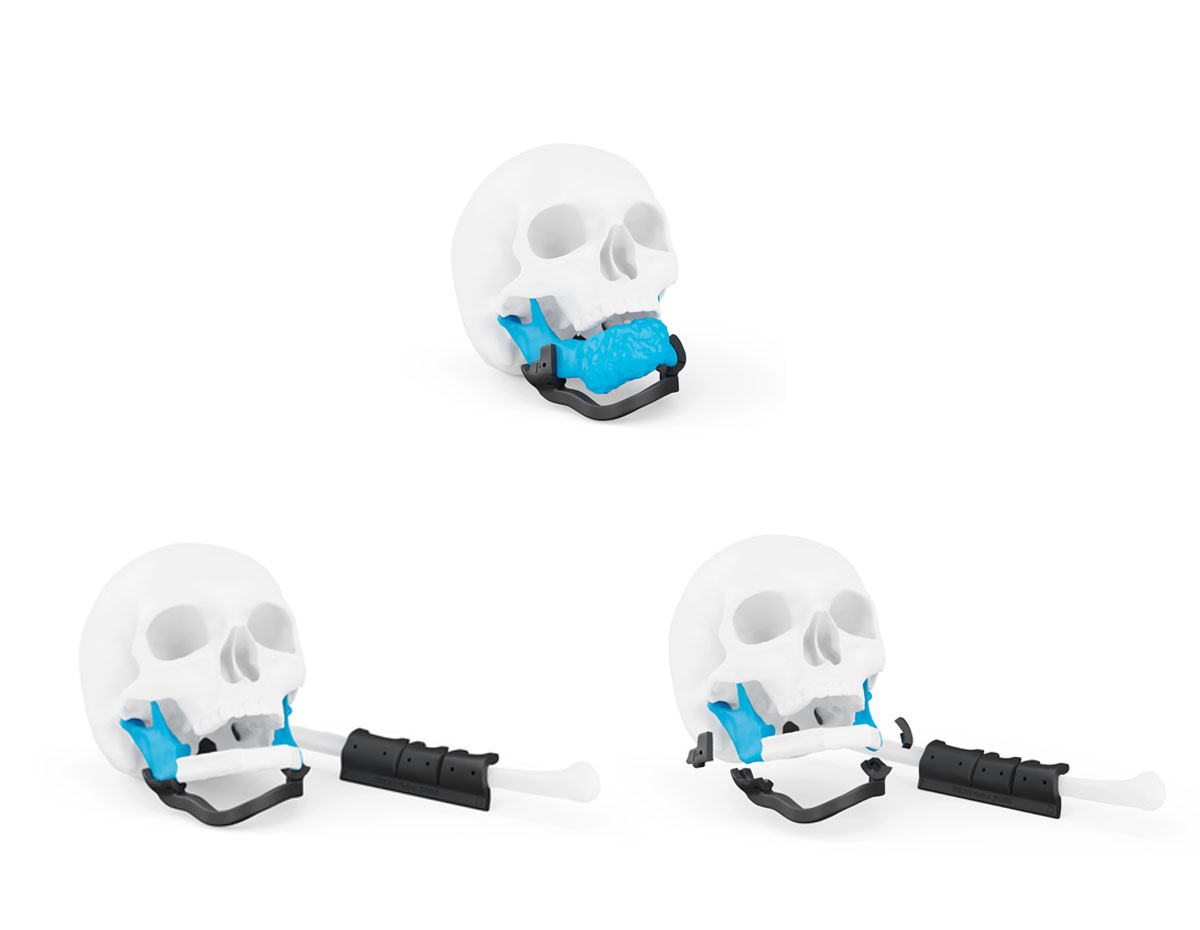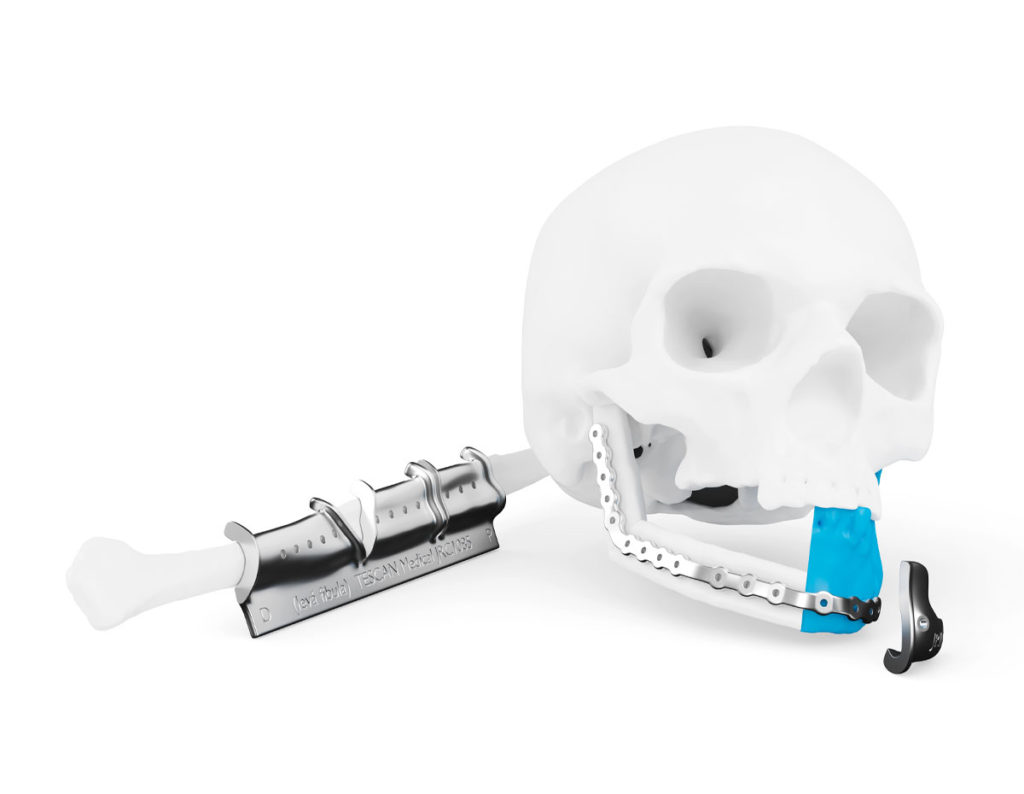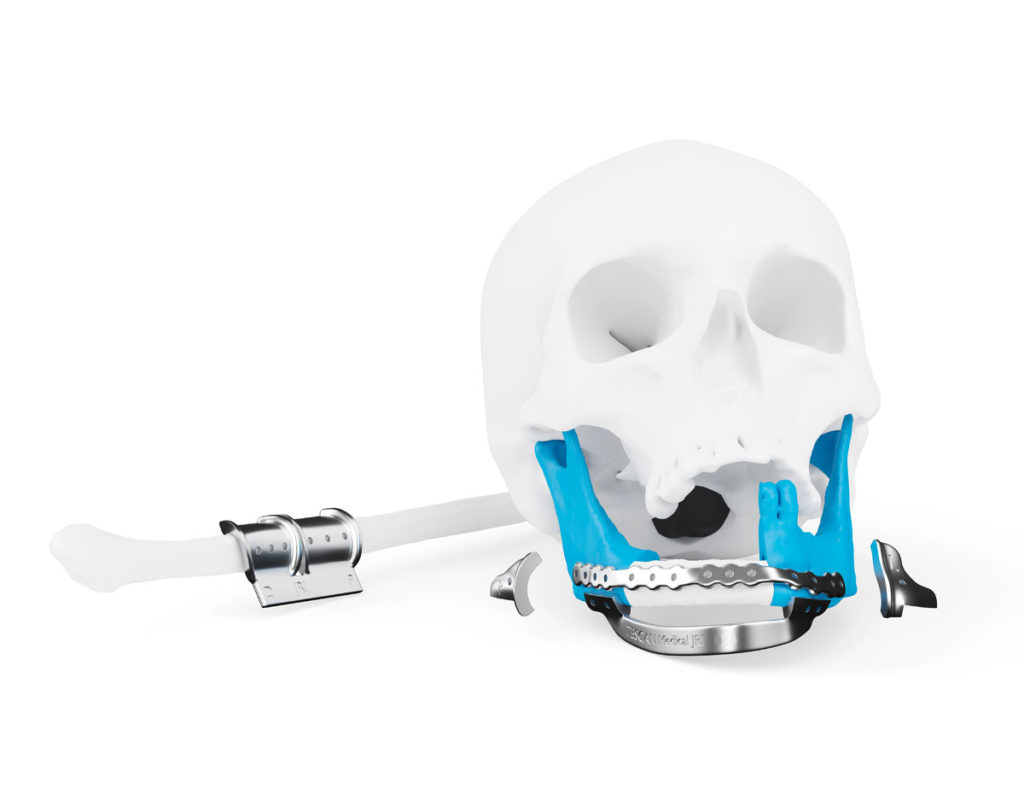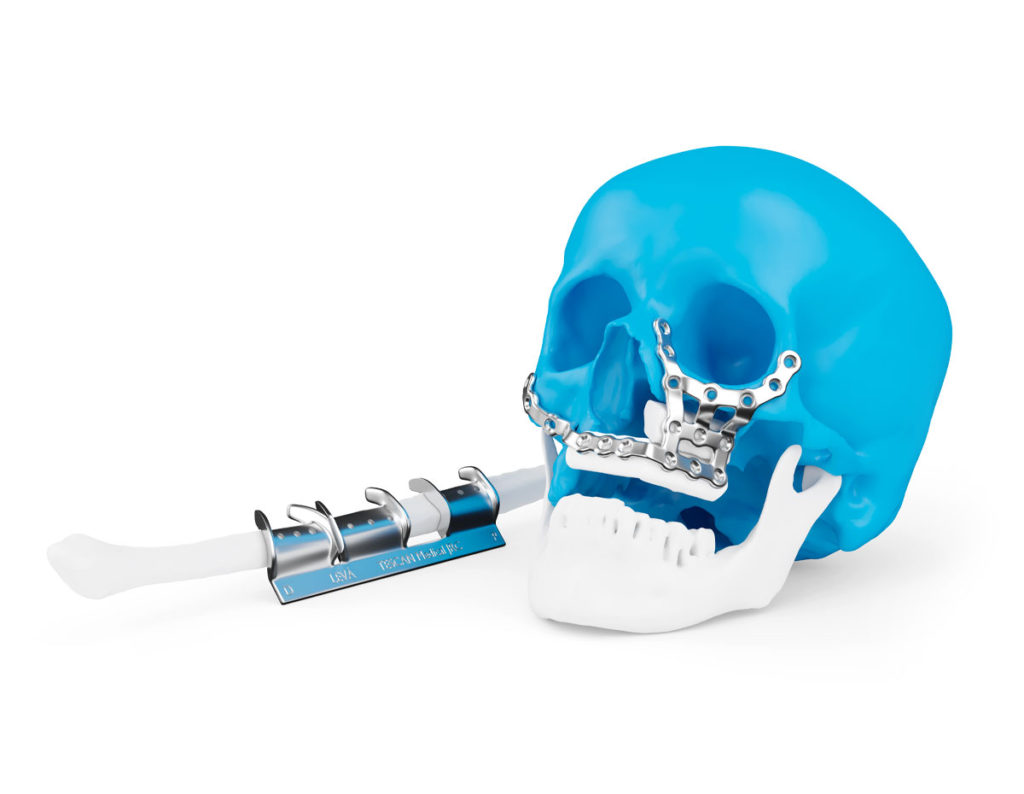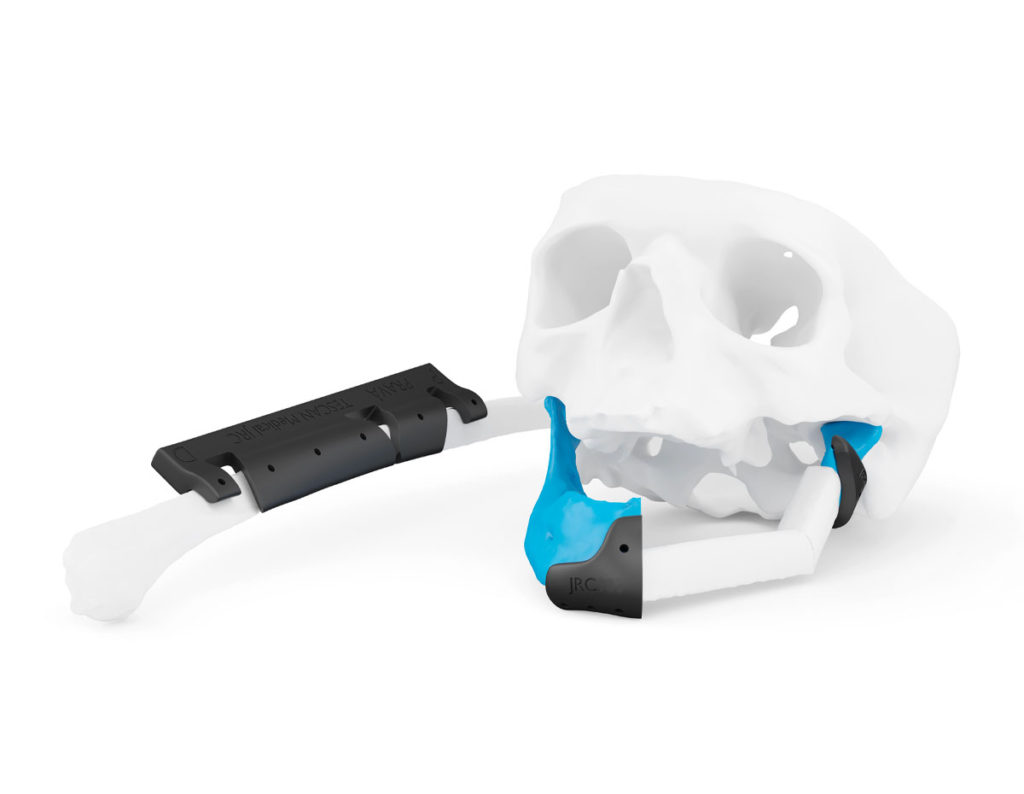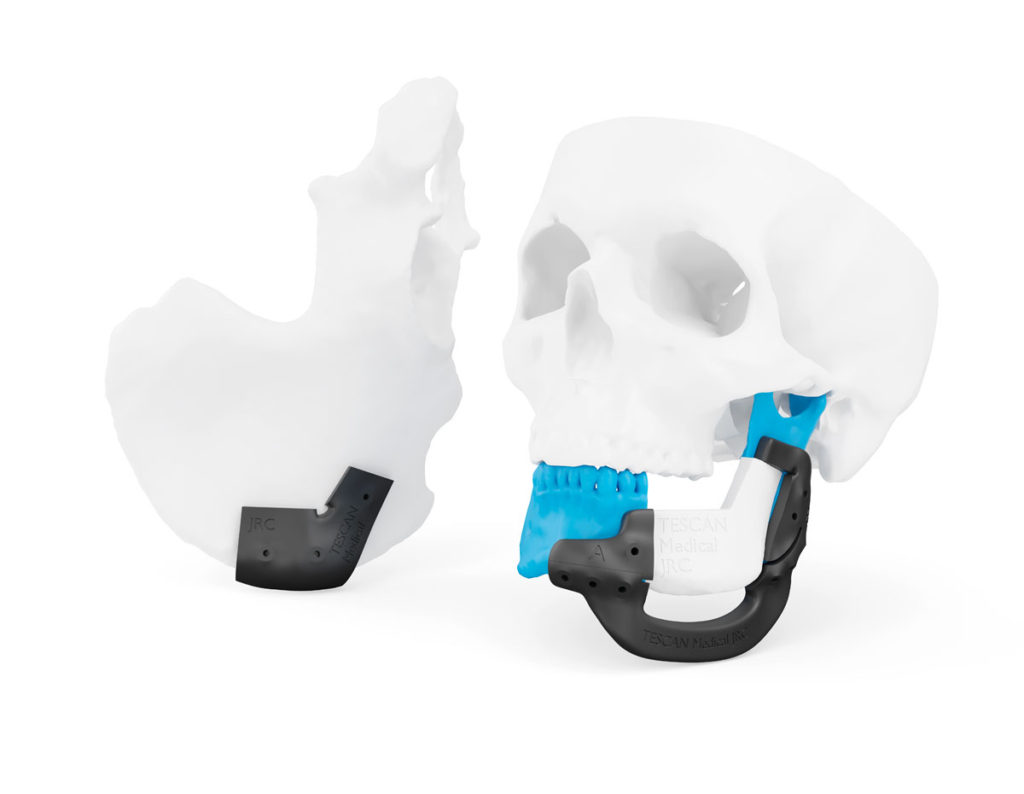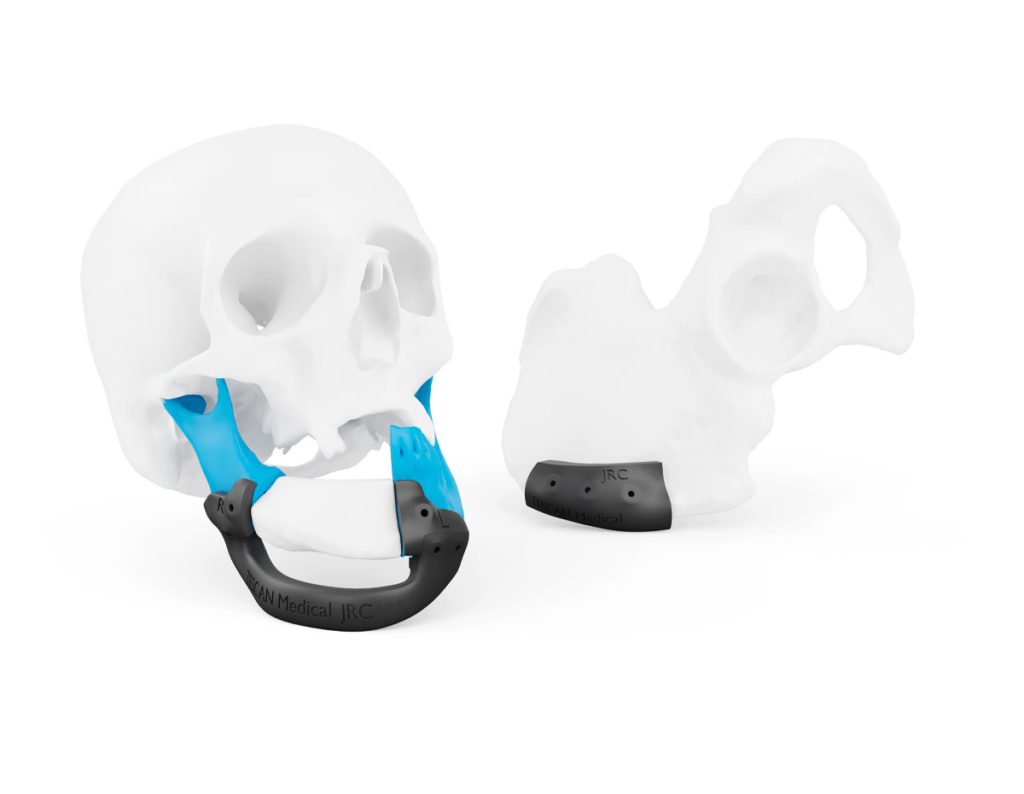Patient-specific jaw reconstruction is a set of individual medical devices to be used for corrections of upper and lower jaw defects.
Jaw defects are reconstructed with the aid of vascularised autologous bone grafts: from the fibula, pelvis or scapula. Bone grafts are fixed with titanium fixing splints and locking-head screws. Accuracy of the surgery is supported with plastic or titanium cutting and fixing guides. Everything is designed to exactly meet the needs of a particular patient based on 3D image data obtained by CT examination.

